A talk exploring Amoghasiddi for presentation at the Colchester Buddhist Centre, Saturday 7th December 2024

The Milk Maid Vermeer 1660
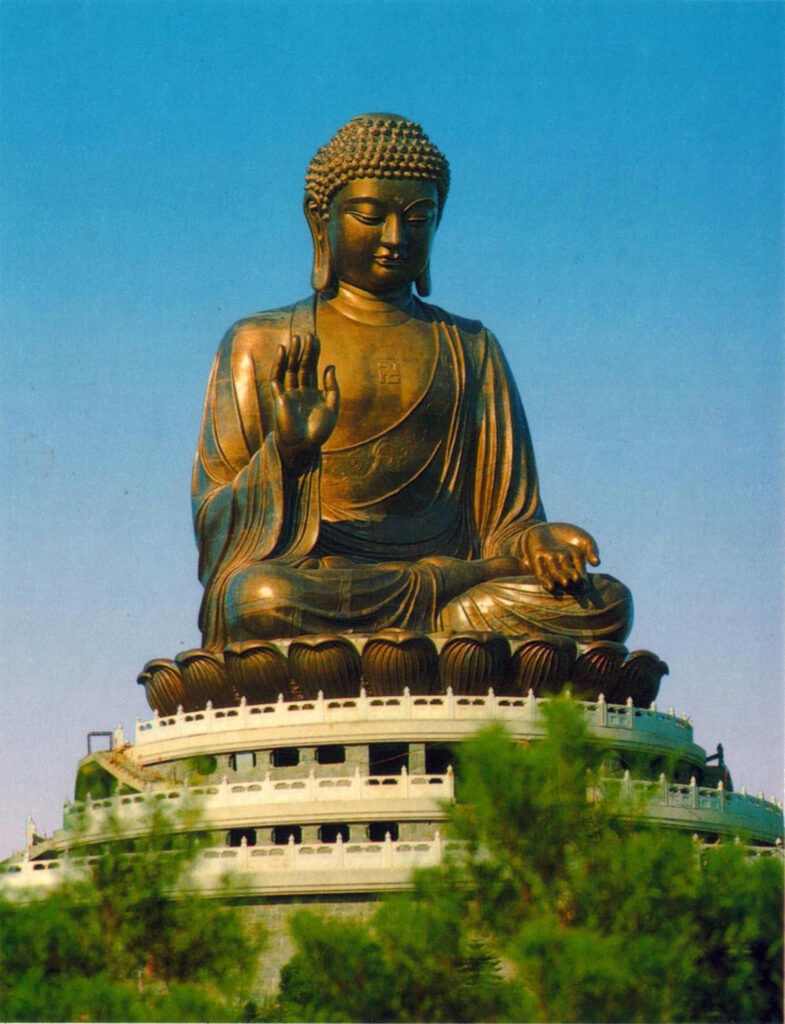
Amoghasiddhi Statute , Hong Kong
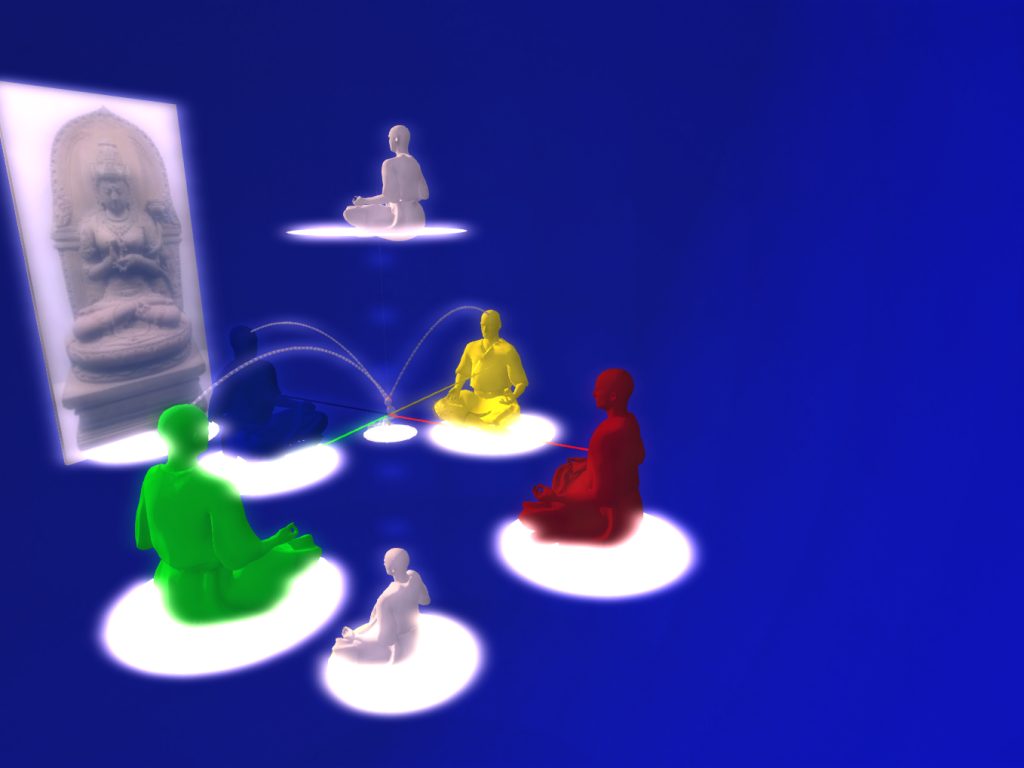
The 5 Buddha Mandela
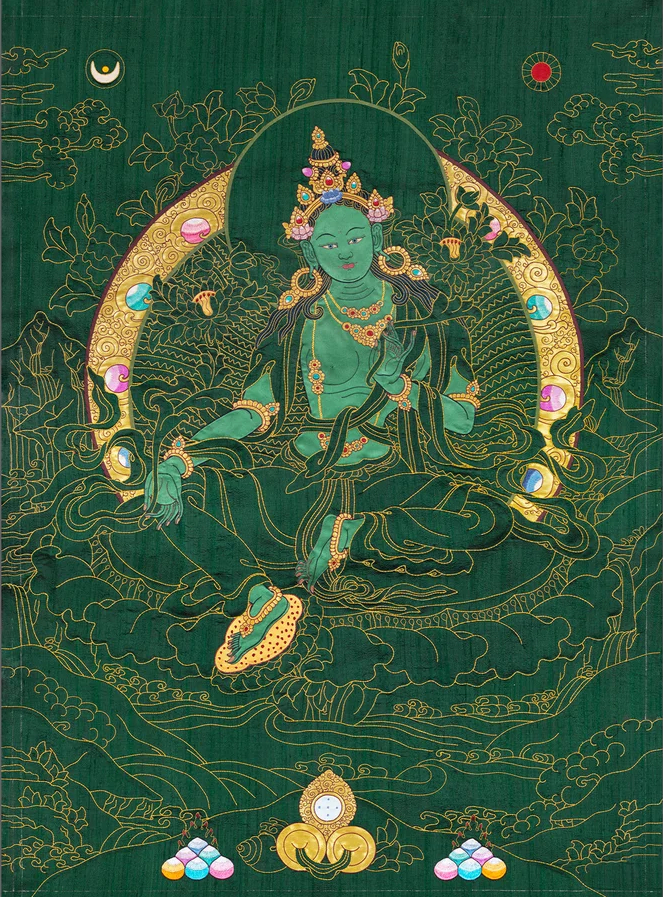
Green Tara
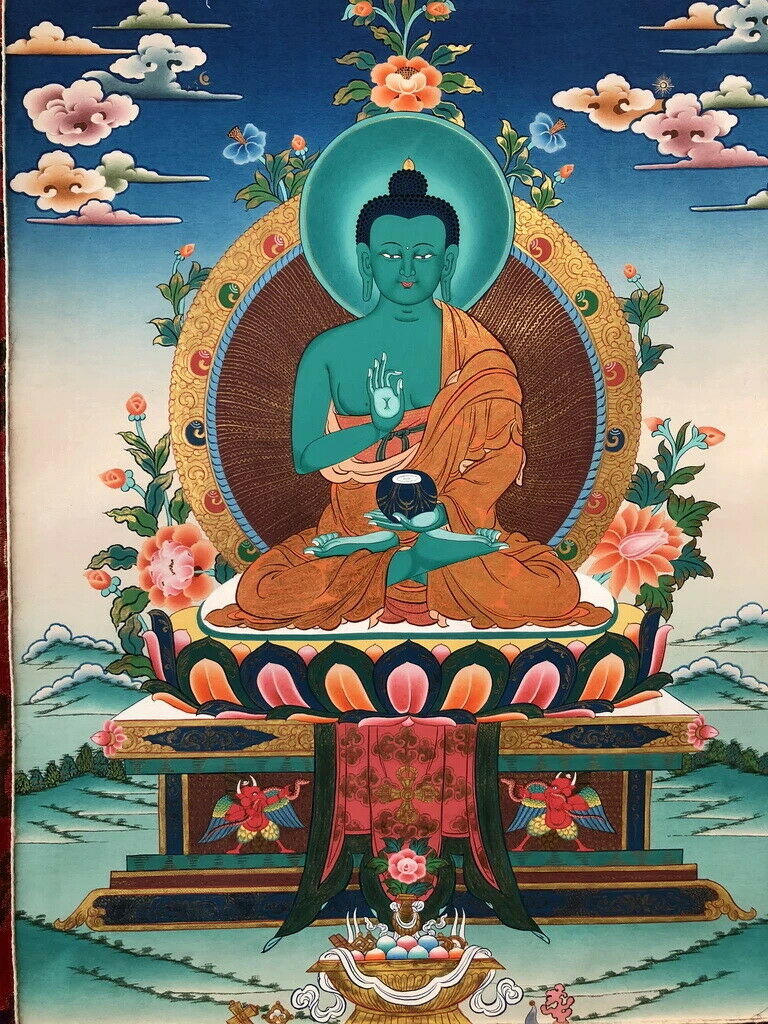
Amoghasiddhi
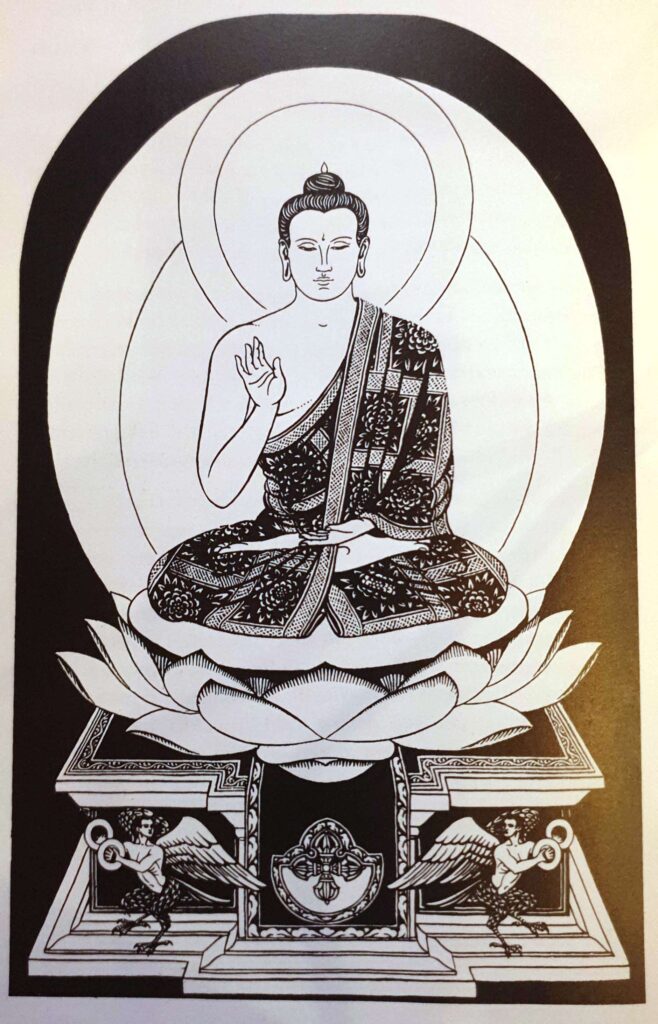
Amoghasiddhi from Meeting the Buddha

First Responders
Amoghasiddhi and Green Tara: Compassionate in a changing World
Introduction: Awareness, Imagination and the possibility of positive change (5 minutes)
Awareness and Imagination are linked
The nature of imagination. – Visual: Use Vermeer’s The Milkmaid. In your imagination jump into the painting. Its 1660 Amsterdam. Its sunny outside, probably noisy. Can you imagine the sounds of people and birds and carts etc. Inside there is the space of the room, the artifacts from that distant past now in the present. There is the careful pouring of the milk. Can you feel the weight of the jug on her arms. The smooth careful pouring. Can you imagine a day in the life of the milk maid?. In the Metta Bhavana meditation we can learn to explore the relationship between our own mind and others in this manner. We can imaginatively be in there shoes. We can imagine the realms of archetypal Buddhas and we can imagine a realm beyond human imagination. Imagination is far out.
The state of play for most of us regarding the dynamics of the mind.
We are aware we are aware. – there is a self-evident perception of consciousness.
When we are a bit mindful, maybe in body awareness meditation, we can see that directing our attention on the objects of our senses , lights up the object and this appears as sensations in our minds.
The qualities of our attention are shaped by presumptions, so we often see what we expect. So what appears in our mind depends to an extent on our outlook. Also our response in terms of feelings , emotions and thoughts reflect this outlook. This relationship between outlook-presumptions, and the activity of the mind is predominately habitual. The mind is in a resonance with and driven by momenta of good and bad habits. These momenta or habits constitute our volitional karma.
Now there exists states of mind, well at least we can imagine states of mind, where the awareness, attention-perception, is not bound by unmindful habitual tendancies, but where the possibility of growth towards happiness is always see, and the desire to move in that direction is always there and with a deep breath in the heat of the moment our imagination might show us a different response.
In the above perspective consciousness is essentially dynamic. So the attention, the perceptions, the feelings etc are all essentially dynamic. Not only that, every perceived object of any sort is also dynamic changes.
Now the ego limits the scope of attention, because of its presumptions and especially its desires and aversions, coloring perceptions and confining the available decision space and room for creative response..
This talk invites us to explore the pathways from ego-bound states of mind to heightened experiences of creative response, as exemplified in the goal of enlightenment by the minds of Amoghasiddhi and Green Tara.
To give you some idea of what is meant by the enlightened state Amoghasiddhi lets do a short lead meditation conjuring up his presence in our imagination. — Visiting Amoghasiddhi.
So firstly Amoghasiddhi , his mind, is one aspect of the Mandala of the Five Buddhas , the topic of the current series. : I’ll say more if required. Briefly the Mandala of the Five Buddhas forms a map of enlightened qualities. Amoghasiddhi placed in the northern quadrant, symbolizing fearless action and unobstructed success. He resonates strongly , well completely, with the female form of Green Tara who embodiesperfect receptivity and unobstructed compassionate action.
Here are two images of Amoghasiddhi. One is from Hong Kong and the other a ink drawing from Vessantara’s book. Maybe we can discuss how we respond to these images.
So lets emphasize that Amoghasiddhi and Tara represent the mental state of **immediate, ethical, and effective response** to suffering. These states are a goal for Buddhist practitioners. The continual practice of ethics, meditation and devotional connection with the Buddhas leads the practitioner gradually , sometimes abruptly, from the comfort of their often unpleasant mental states and perceptions towards an open direct connection with buddha mind in the form of Amoghasiddhi and Tara.
So the task in hand ifor the practitioner is to follow the essentially dynamic Pathways from Ego to fearless Compassionate Action. Just thinking about it , we can say that there are three regimes of mind in the context of following the path. The first corresponds to the wheel of life where presumptive ,reactive, same as before, mental states propagate keeping the mind within an ‘ego consciousness’. The second corresponds to moving from reactive responses through heightened awareness onto the ‘spiral path’. This starts at the ‘coal face’ outside our ‘comfort zone’ of responding to situations with more aware and compassionate response. Some life experiences like moments of unexpected hardship or grief can be an opportunity for a more creative response from us. This is often quite apparent in the altruism seen in end-of-life care and first responders and these are examples of transcending ego.
You could say Amoghasiddhi and Tara are the ultimate first responders. This is definitely there territory. They manifest in human minds as the mental state of unimpeded compassionate action. Their actions are always ethical, appropriate, and aligned with reality, leading to success.m. Here is an image of the “first responder” emblem. It is a symbol of the practical manifestation of immediate appropriate response to real-world examples.
Its often the case that Buddhist practitioners feel the presence of ‘fortuitous happenstance ‘ in their lives. They find the bus just turns up on time, there is a parking space for them, the worldly winds of life are kinder, they find more opportunity to help others and they enjoy that. Their practice of ethics meditation and receptive pursuit of wisdom brings their mind more and more in resonance with the archetypal Buddhas. And as they develop it looks like these archtypal states of mind manifests more and more effectively through resonant with the human minds of Buddhist practitioners and many others with a call to helping.
Just a thought. Humans with minds aligned to Buddha qualities become their avatars. For many practitioners explore how imagining and resonating with Amoghasiddhi and Tara cultivates a ‘continuous awareness’ of the state of mind of these archetypes in the practitioner’s mind.
I want to give some attention now to the idea of devotion. Devotion is Buddhism is quite a subtle activity. Its got a definite utility. When in imaginative meditation bringing up the sense of the presence of the Buddha or one of the manifestations like Amoghasiddhi in a receptive and open way with minimum presumptions about who or what to expect, that state of mind is very receptive to direct perception. It feels like devotion creates a kind of wormhole-like connection between the devotee’s mind and the imagined mind of the archetype. This fosters transformation and a feeling of being directly connected with the ‘good’ with a sense fo a cathartic cleaning of negative presumptions and habits.“
You might end up like Green Tara as in this image. She represents and can be experienced as the “quintessence of compassion,” accessible yet profound in the mind of the practitioner. Now all this is often profound but fleeting, unstable and dynamic. But as one practices more changes remain dynamic but become more stable.
Meditation and Guided Visualization Practice for Amoghasiddhi
–
Lead participants through imagining the midnight forest, the jade palace, and the radiant green Buddha emerging in his chariot.
– Invite them to focus on his **double vajra**, symbolizing integration and balance, and his **abhaya mudra**, radiating fearlessness.
– **Connecting with Green Tara**:
– Guide participants to visualize her emerging from the lake of tears, her compassionate light soothing the world.
– Encourage participants to feel her approachable yet profound presence.
– Encourage openness and patience:
– “Like learning watercolor painting, resonance with these archetypes develops over time.
Attention and volition are key. Insights often arise later, in unexpected moments.”
– Visual: Display the image of Green Tara during this segment.
Practical Applications: Embodying Compassionate Action** *(10 minutes)*
– Offer ways to integrate these teachings into daily life:
1. Attention and Reflection:
– Regularly reflect on Amoghasiddhi’s fearless energy and Tara’s compassionate presence.
2. Visualization Practices:
– Visualize their qualities during meditation, allowing them to influence responses to life’s challenges.
3. Altruistic Action:
– Engage in acts of kindness and service, cultivating the habits of immediate and skillful response.
Conclusion: Resonance and Transformation
– Reflect on the ultimate goal:
– “Amoghasiddhi and Tara represent the path of compassionate, skillful action. By resonating with their qualities, we align with the fearless, ethical energy that lies within us all.”
– End with an invitation:
Giving Archytypal Buddhas our time in imaginative bvisualisation can open our mind to their presence and the mental states that they manifest. These states of mind are already within you waiting to unfold manifest when you give them your attention and heart. They are already within you, waiting to be realized.”
